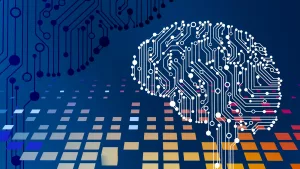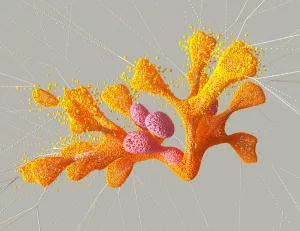Drones have revolutionized how we interact with our environment, offering capabilities that range from aerial photography to agricultural monitoring and even delivery services. At the heart of these capabilities is the sophisticated technology that allows drones to fly autonomously. Let’s delve deeper into this fascinating world of autonomous drone flight and explore the components and systems that make it all possible.
Drone Hardware Components
When discussing the hardware that empowers drones to operate without human intervention, it’s essential to understand how each component contributes to the overall functionality. Drones are equipped with various hardware components that work together seamlessly. These include:
- GPS Modules: Essential for navigation and location tracking.
- Sensors: Such as accelerometers, gyroscopes, and barometers that provide data on movement, orientation, and altitude.
- Cameras: Used for visual data capture and processing.
- Propulsion Systems: Comprising motors and propellers that enable flight.
- Onboard Computers: The brain of the drone, processing data and executing commands.
Each component plays a critical role in enabling autonomous flight, and their integration is a testament to modern engineering.
Understanding Propulsion Systems
The propulsion system is vital, as it provides the mechanical force needed for the drone to lift off, hover, and maneuver. The system typically includes brushless motors due to their efficiency and longevity, paired with propellers designed to optimize lift and stability. The choice of materials for propellers, such as carbon fiber or plastic, can impact performance, with carbon fiber providing greater durability and efficiency. This system must be finely tuned to the drone’s weight and intended use, ensuring that the power output matches the required performance.
GPS and Navigation Systems
One of the key elements that allow drones to fly autonomously is the GPS module. This module provides precise location information to the drone, allowing it to navigate its surroundings with accuracy. In addition to GPS, drones also utilize other navigation systems such as GLONASS, Galileo, and BeiDou for enhanced positioning capabilities.
Detailed Navigation Systems
- GPS (Global Positioning System): Offers global coverage and high accuracy, crucial for most autonomous operations.
- GLONASS (Global Navigation Satellite System): Russia’s counterpart to GPS, providing additional satellite signals for increased reliability.
- Galileo: The European Union’s contribution to global navigation, known for its precision, especially in urban areas with tall buildings.
- BeiDou: China’s navigation system, offering robust capabilities in the Asia-Pacific region.
These systems work in conjunction to provide redundancy and ensure reliable navigation, especially in challenging environments like urban areas or remote regions. For example, in a dense urban setting, where tall buildings might obstruct signals, having access to multiple satellite systems ensures that the drone maintains accurate positioning. Additionally, technologies such as Real-Time Kinematic (RTK) positioning are being incorporated to enhance precision by compensating for signal delays and inaccuracies.
Sensor Technology
Sensors play a vital role in autonomous drone flight by providing real-time data about the drone’s position, altitude, orientation, and surroundings. Here’s a deeper look into how these sensors function:
- Accelerometers: Measure the drone’s change in velocity, helping it maintain stable flight.
- Gyroscopes: Detect changes in orientation, allowing the drone to maintain balance and direction.
- Barometers: Measure atmospheric pressure to determine altitude, crucial for tasks like precision agriculture.
- LiDAR: Light Detection and Ranging systems use laser pulses to map out the environment, offering highly accurate obstacle detection.
- Infrared Sensors: Used for proximity sensing and collision avoidance, especially in low-light conditions.
Advanced Sensor Fusion
Advanced sensor fusion techniques integrate data from multiple sensors to enhance accuracy and reliability. For instance, combining accelerometer and gyroscope data allows drones to make precise adjustments to maintain stability even in windy conditions. This fusion is akin to how the human brain processes multiple sensory inputs to understand and interact with the environment. Moreover, thermal imaging sensors are increasingly used in drones for applications like search and rescue, where detecting heat signatures is crucial.
Computer Vision and Artificial Intelligence
Computer vision technology enables drones to perceive and interpret visual data from their surroundings. By using cameras and advanced algorithms, drones can identify objects, obstacles, and landmarks, enabling them to make informed decisions during flight.
Application of Computer Vision
- Obstacle Avoidance: Cameras and sensors detect obstacles in real-time, allowing the drone to navigate around them.
- Object Tracking: Drones can lock onto moving objects, such as a vehicle or a person, providing real-time tracking for surveillance or media purposes.
Artificial intelligence algorithms further enhance the drone’s ability to process data and make autonomous navigation decisions. Machine learning algorithms are also utilized to continuously improve the drone’s recognition and decision-making capabilities over time, making them more efficient and adaptable to different scenarios.
Deep Learning for Enhanced Autonomy
Deep learning, a subset of machine learning, is increasingly being integrated into drones for more sophisticated tasks. For example, drones can be trained to recognize specific terrain types, allowing them to autonomously select landing sites in emergencies. The use of convolutional neural networks (CNNs) enables better processing of visual data, making drones adept at identifying complex patterns and anomalies in their environment.
Flight Planning and Control Algorithms
Autonomous drones rely on sophisticated flight planning and control algorithms to perform complex maneuvers and navigate through diverse environments. These algorithms take into account factors such as wind speed, obstacle avoidance, battery life, and mission objectives to optimize flight paths and ensure safe operations.
Real-World Flight Planning
Imagine a drone tasked with delivering a package across a busy city. The flight planning algorithm must consider:
- Optimal Path: Calculating the shortest and safest route.
- Weather Conditions: Adjusting for wind and precipitation to maintain stability.
- No-Fly Zones: Avoiding areas restricted by regulations.
- Battery Management: Ensuring enough power for a safe return.
Real-time data processing and feedback loops allow drones to adjust their flight parameters dynamically, reacting to changing conditions and scenarios. Additionally, these algorithms are continuously updated and refined based on real-world flight data and performance metrics to enhance overall efficiency and safety.
Adaptive Flight Control
Adaptive flight control is a burgeoning area that allows drones to learn from each flight, improving their performance over time. These systems adapt to changing payloads or environments, recalibrating control surfaces for optimal flight characteristics. For example, a drone used for agricultural spraying might adjust its flight pattern based on varying wind speeds detected mid-flight.
Practical Tips for Autonomous Drone Operation
Operating an autonomous drone requires understanding both the technology and the practical aspects of flight. Here are some tips:
- Pre-Flight Checks: Always conduct a thorough inspection of your drone’s hardware, ensure all sensors are calibrated, and that the GPS system is functioning correctly.
- Software Updates: Keep your drone’s software updated to benefit from the latest features and security improvements.
- Environment Assessment: Before launching, assess the flight environment for potential hazards or signal obstructions.
- Battery Management: Monitor battery levels closely, especially for longer missions, and have a contingency plan for emergency landings.
- Data Management: Ensure that all captured data is securely stored and backed up, especially for commercial operations requiring detailed logging and analysis.
Common Mistakes and How to Avoid Them
Even seasoned drone operators can make mistakes. Here are some common pitfalls and how to avoid them:
- Ignoring Weather Conditions: Weather can drastically affect flight. Always check forecasts and avoid flying in extreme conditions.
- Overloading the Drone: Exceeding weight limits can impair flight performance. Ensure payloads are within recommended limits.
- Neglecting Regulatory Compliance: Always adhere to local regulations concerning drone flight to avoid fines and legal issues.
- Inadequate Training: Ensure you are well-trained in drone operation and understand the autonomous systems before attempting complex flights.
Navigating Regulatory Challenges
As drones become more prevalent, navigating the regulatory landscape is crucial. Different countries have diverse regulations regarding drone use. For instance, the FAA in the United States mandates registration for drones above a certain weight and enforces strict no-fly zones around airports. Always keep abreast of the latest regulations to ensure compliance and avoid potential legal issues.
Future Trends in Autonomous Drone Technology
The future of autonomous drones is bright, with several exciting trends on the horizon:
- Swarm Technology: Coordinating multiple drones to work together on complex tasks, such as large-scale agricultural monitoring or search and rescue operations.
- Enhanced AI Capabilities: Continued advancements in AI will enable drones to make even smarter decisions, improving efficiency and reducing human intervention.
- Longer Flight Times: Battery technology improvements promise longer flight durations, expanding the range of applications.
- Urban Air Mobility: The integration of drones into urban transportation systems, potentially transforming how we think about short-distance travel and deliveries.
Green Energy Solutions
The push towards sustainability is influencing drone technology, with solar-powered drones already being tested for extended missions. These drones can potentially stay airborne for weeks, offering new opportunities for environmental monitoring and communications relays.
As technology evolves, drones will become even more integral to our daily lives, offering new possibilities and challenges. By understanding the intricate systems that allow drones to fly autonomously, we can better appreciate their capabilities and harness their full potential in various industries.



